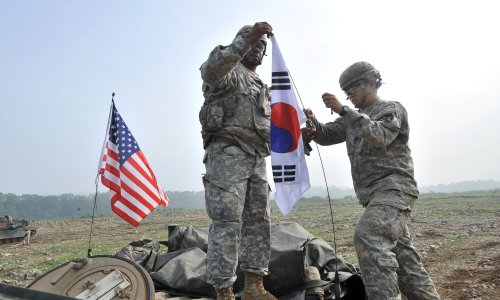In a significant move aimed at addressing the growing nuclear threat from North Korea, senior defense officials from South Korea and the United States met in Seoul to establish new guidelines for their joint response. The meeting, part of the third round of the Nuclear Consultative Group talks, focused on enhancing the allies’ “credible and effective” nuclear deterrence policy and posture.
The discussions came against the backdrop of North Korea’s relentless efforts to develop its nuclear arms and delivery systems, which have raised concerns among South Korean policymakers. Some have even called for Seoul to consider developing its own nuclear weapons, a step that Washington opposes, instead relying on the U.S. nuclear umbrella.
The joint statement from the allies emphasized the importance of maintaining and strengthening their nuclear deterrence capabilities. Vipin Narang, the acting US assistant secretary of defense for space policy, who co-chaired the talks, explained that the new guidelines establish an “architecture” for how the two countries will integrate their conventional and nuclear capabilities in a crisis.
These guidelines, Narang said, will provide a framework for consultations, particularly in the event of a North Korean nuclear crisis, and inform the allies’ operational concepts and exercises. This is a significant development, as it suggests a more cohesive and unified approach to responding to any potential nuclear threat from the North.
South Korea’s Deputy Defense Minister for Policy, Cho Chang-rae, further elaborated on the plans, stating that high-level officials from both countries will hold a simulated tabletop exercise before the regular summertime drills, with a specific focus on the possibility of North Korea using a nuclear weapon. The ongoing tensions between the two Koreas, who are still technically at war after their 1950-53 conflict ended in an armistice rather than a peace treaty, have heightened the urgency for the allies to strengthen their coordination and preparedness.
In late May, North Korea’s attempt to launch a military reconnaissance satellite failed after a newly developed rocket engine exploded in flight. Seoul and Washington condemned this launch as a violation of U.N. Security Council sanctions, which ban Pyongyang’s use of ballistic technology. The joint statement from the previous Nuclear Consultative Group meeting in December had already warned that any nuclear attack by North Korea against the United States or its allies would be met with a “swift, overwhelming and decisive response” and would result in the end of Kim Jong Un’s regime.
The next meeting of the Nuclear Consultative Group is scheduled to take place in Washington near the end of this year, underscoring the ongoing commitment of the South Korean and US governments to address the North Korean nuclear threat through close collaboration and coordination. By establishing these new guidelines and enhancing their joint response capabilities, the allies are signaling their determination to maintain a strong and effective deterrent against any potential nuclear aggression from North Korea. This strategic partnership aims to provide stability and security in the region, while also sending a clear message to Pyongyang that its nuclear ambitions will not be tolerated.
















